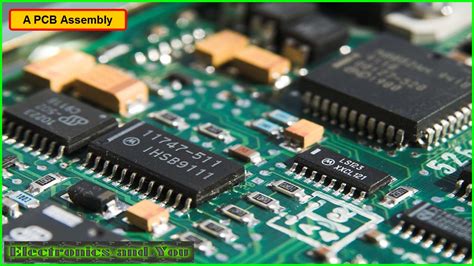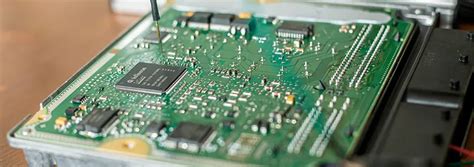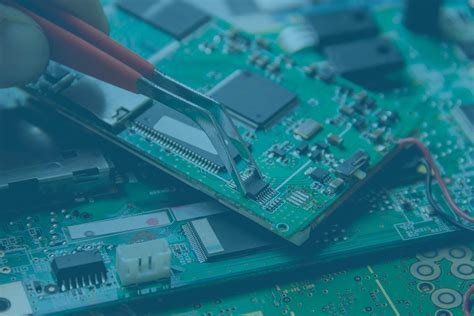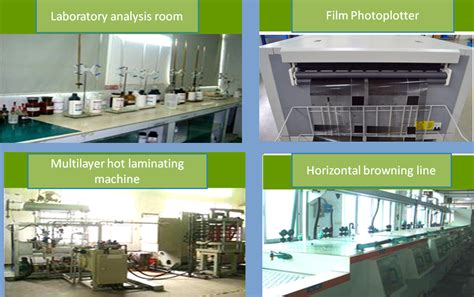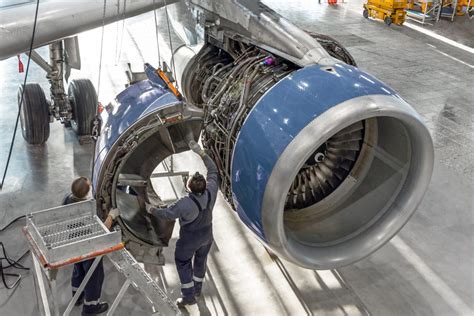Mastering Board Assembly: A Key to Precision Engineering
Key Takeaways
In the realm of pcb assembly, achieving precision is paramount. The intricacies involved in pcba demand a thorough understanding of both the theoretical and practical aspects. First, it’s essential to grasp the basic principles underlying board assembly; this acts as the foundation for all subsequent processes. An emphasis on essential tools cannot be overstated, as these instruments are crucial for executing each task with accuracy. Techniques specifically designed for achieving precision in this field play a vital role; from soldering methods to placement strategies, mastering these techniques ensures optimal outcomes.
Moreover, implementing best practices for quality control is indispensable. Regular inspections and adherence to standards will significantly mitigate errors and enhance the reliability of assemblies. Individuals in this field frequently encounter common challenges—such as component misalignment or solder defects—and having a repertoire of solutions ready can help navigate these issues effectively.
Additionally, cultivating an efficient workflow is more than just an operational necessity; it enhances overall productivity and ensures that every assembly process contributes positively to end results. Embracing emerging trends and innovations in board assembly technology keeps professionals on the cutting edge of precision engineering, paving the way for continuous improvement.
In summary, being well-equipped with knowledge on both practical tools and methods involved in pcb assembly can dramatically improve outcomes, making it essential for professionals to remain informed about best practices and advancements within this evolving field.
Understanding the Basics of Board Assembly
Board assembly, particularly related to pcb assembly or pcba, plays a crucial role in the landscape of precision engineering. At its core, the process involves several key components that work in harmony to create effective electronic devices. Understanding these fundamental aspects is essential for anyone looking to dive deeper into the intricacies of this field.
The first step in board assembly is to comprehend the layout specifications and design parameters of the printed circuit board (PCB). These designs dictate how components are arranged and connected, ensuring that electrical signals flow properly throughout the device. Effective pcba not only considers functionality but also factors like thermal management and signal integrity.
Moreover, selecting appropriate materials for both the PCB and its components is paramount. The quality of materials directly influences reliability and longevity; therefore, adhering to industry standards during this phase is essential.
“A meticulous approach to layout design can significantly enhance the performance and reliability of any assembled board.”
Following this, one must navigate through various methods of soldering, such as wave soldering or reflow soldering, each suited for different kinds of assemblies. Mastering these techniques contributes overwhelmingly to achieving a high standard of precision in pcb assembly.
In addition, knowledge of inspection techniques—like automated optical inspection (AOI)—is invaluable in maintaining quality assurance throughout the process. Regular checks prevent defects that could compromise functionality later on.
To summarize, grasping these foundational concepts not only provides a clearer picture of how effective board assembly operates but also lays a solid groundwork for mastering advanced techniques in precision engineering.
Essential Tools for Successful Board Assembly
In the realm of pcb assembly, utilizing the right tools is crucial for achieving optimal results. A comprehensive toolkit for pcba encompasses various instruments tailored to enhance precision and efficiency during the assembly process. Fundamental tools such as soldering irons and soldering stations are indispensable, offering exact temperature control to ensure proper connectivity. Additionally, a quality multimeter is vital for verifying electrical connections and ensuring the performance of assembled boards.
Moreover, incorporating precision tools like tweezers and magnifying glasses can significantly streamline the handling of delicate components, reducing the risk of damage during assembly. It is also essential to invest in a well-organized workstation equipped with appropriate storage solutions. This not only facilitates quick access to tools but also promotes an efficient work environment, ultimately leading to higher quality outputs in pcb assembly. As technology continues to advance, staying informed about emerging tools and trends will further enhance competencies in the delicate art of pcba, setting a foundation for exceptional engineering outcomes.
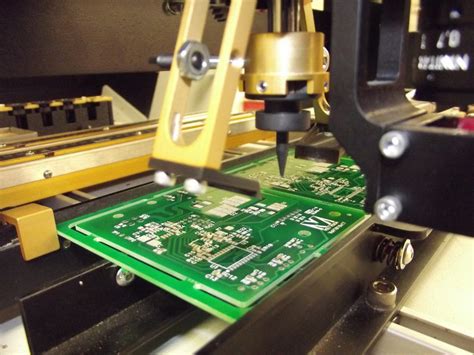
Techniques for Achieving Precision in Board Assembly
Achieving high precision in pcb assembly is critical for the success of any electronic product. One key technique involves the meticulous placement of components on the printed circuit board (PCB). Utilizing automated pick-and-place machines enhances accuracy significantly, as these machines can position components with sub-millimeter precision. For optimal results, it’s essential to ensure that the pcba is designed with clear implications for component spacing, which helps prevent overlap and misalignment during assembly. Another effective technique is the use of advanced soldering methods, such as reflow and wave soldering, which ensure uniform solder distribution while minimizing defects. Proper thermal management during these processes guarantees that components are not subjected to excessive heat, which can lead to failure or imperfections in assembly. Furthermore, implementing optical inspection systems allows operators to identify and address issues early in production, ensuring consistent quality throughout the board assembly process. By integrating rigorous testing protocols post-assembly—such as automated electrical testing—manufacturers can confirm that each board meets precise specifications before entering the market. These techniques collectively contribute to achieving high-quality results in pcb assembly, firmly establishing a reputation for reliability and precision within the field of engineering.
Best Practices for Quality Control in Board Assembly
Quality control in pcb assembly is fundamental for ensuring that each unit meets the required performance standards and specifications. To achieve high-quality results, it’s essential to implement several best practices throughout the pcba process. First and foremost, regular inspections at various stages of board assembly can catch defects early. This may involve visual inspections, automated optical inspection (AOI), or functional testing, depending on the complexity of the assembly.
Establishing a robust standard operating procedure (SOP) is crucial; it should outline all essential steps and checks involved in pcb assembly to minimize human error. Training your workforce on these SOPs ensures that all team members understand their responsibilities and can maintain consistent quality across all operations.
Additionally, utilizing advanced tools such as solder paste inspection machines and X-ray equipment can uncover issues typically undetectable by visual inspection alone, ensuring that critical components are correctly placed and soldered. Furthermore, adopting a statistical process control (SPC) method to monitor production fluctuations can help in identifying trends or recurring problems before they escalate.
To illustrate these best practices, consider the table below which summarizes key quality control measures:
| Quality Control Measure | Description |
|---|---|
| Regular Inspections | Conducting inspections at various stages of production |
| Standard Operating Procedures | Established guidelines for consistent processes |
| Advanced Inspection Tools | Use of AOI, X-ray technology for in-depth analysis |
| Statistical Process Control | Monitoring production data to spot trends |
Integrating these quality control measures not only enhances the reliability of pcba outputs but also contributes to higher client satisfaction through improved product performance. Keeping quality assurance at the forefront of your board assembly process will pave the way for sustained excellence in precision engineering.
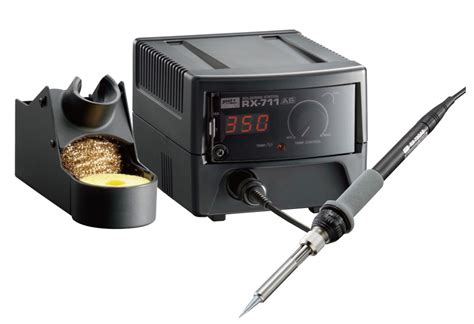
Common Challenges and Solutions in Board Assembly
In the intricate world of pcb assembly and pcba, various challenges can arise that can compromise the quality and efficiency of the process. One common hurdle is the issue of misalignment during the assembly, which often leads to defects and rework. To combat this, employing advanced alignment tools and technologies can significantly enhance precision. Additionally, staying abreast with proper soldering techniques is essential, as improper joining can cause electrical connectivity issues. Another major challenge involves managing component placement – dealing with small components requires meticulous handling to avoid damage or misplacement. Implementing automated optical inspection systems can ensure that all components are correctly positioned before soldering. Furthermore, temperature control during soldering is crucial; overheating components can lead to poor performance or failure. Adopting temperature monitoring tools helps maintain optimal ranges throughout the pcb assembly process. Ultimately, while challenges in pcba are inevitable, understanding these common pitfalls and implementing effective solutions will lead to more successful outcomes in precision engineering.
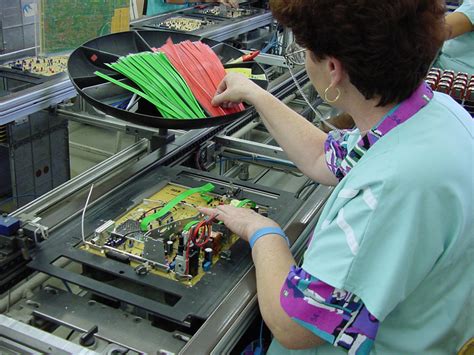
The Importance of Efficient Workflow in Board Assembly
Efficiency in pcb assembly is paramount not only for maintaining productivity but also for ensuring the overall quality of the product. A streamlined workflow minimizes errors and maximizes output, establishing a robust foundation for any pcba operation. Achieving this efficiency requires an intricate understanding of the various stages involved in board assembly, from initial component placement to final testing. One key strategy involves implementing well-defined procedures that outline each task, ensuring that team members are aligned and aware of their responsibilities. Equally critical is the strategic arrangement of workstations and tools; optimizing physical spaces can significantly reduce handling times and enhance precision in the assembly process. Additionally, adopting modern software solutions can aid in tracking progress and identifying bottlenecks in real-time, allowing for quicker adjustments to be made as challenges arise. By focusing on these aspects, companies can create an efficient workflow that not only accelerates production but also elevates the standards of quality control, ultimately leading to superior pcba results.
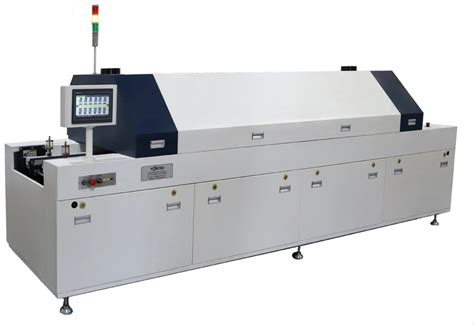
Future Trends in Board Assembly Technology
As the landscape of pcb assembly continues to evolve, several future trends are poised to shape the industry significantly. One of the most notable advancements is the increasing use of automation in pcba processes. Automation not only enhances efficiency but also improves accuracy in assembly tasks, reducing the possibility of human error. Additionally, the integration of artificial intelligence (AI) is set to revolutionize how manufacturers approach quality control within board assembly lines. With AI systems capable of real-time monitoring and predictive analytics, organizations can proactively address potential issues before they escalate. Furthermore, the rise of smaller and more complex electronic components calls for innovative techniques in pcb assembly, including advanced soldering methods and improved pick-and-place technologies. The focus on sustainability is also driving change; manufacturers are increasingly prioritizing eco-friendly materials and processes to reduce waste and energy consumption. As these trends gain momentum, understanding their implications will be essential for professionals aiming to maintain a competitive edge in precision engineering and ensure high-quality outcomes in their board assembly practices.
Case Studies: Success Stories in Precision Engineering
In the realm of pcb assembly and pcba, real-world applications provide valuable insights into the efficacy of various techniques implemented in precision engineering. One notable success story comes from a leading electronics manufacturer that streamlined their board assembly process. By adopting advanced automated systems, they reduced errors significantly, leading to a remarkable increase in production efficiency. This transformation not only cut down on waste but also improved the overall quality of their pcba products. Furthermore, a small startup specializing in medical devices implemented rigorous quality control measures and adopted best practices tailored for pcb assembly. Their focus on precision ensured that every unit met stringent regulatory standards, culminating in successful product launches and enhanced customer trust. These case studies highlight how critical it is to leverage the right tools and techniques for optimizing board assembly, ultimately propelling organizations toward their strategic goals while ensuring high-quality outcomes in precision engineering.
Conclusion
In the journey of mastering board assembly, it becomes evident that the complexity of pcb assembly requires a comprehensive understanding of various components, methodologies, and technologies. Adhering to best practices in pcba ensures not just efficiency but also enhances the overall reliability of the end product. Whether it’s the selection of appropriate materials or maintaining precision during the placement and soldering processes, each step plays a crucial role in achieving high-quality results. It is vital to recognize that ongoing advancements in technology are reshaping board assembly practices, allowing engineers to achieve unprecedented levels of accuracy and productivity. By continually adapting to these innovations and honing one’s skills in pcb assembly, professionals can significantly contribute to the field of precision engineering, ultimately leading to more sophisticated and reliable electronic devices. Emphasizing quality control measures, understanding potential challenges, and fostering an efficient workflow can further enhance the outcomes in pcba, ensuring that projects are not only completed on time but also meet stringent performance standards.
FAQs
What is PCB assembly?
PCB assembly, often abbreviated as PCBA, refers to the process of soldering electronic components onto a printed circuit board (PCB) to create a functional electronic circuit. It combines various techniques and equipment to lay out the components precisely, ensuring effective connectivity and functionality.
What are the most common methods used in board assembly?
The two primary methods used in board assembly are through-hole technology and surface mount technology (SMT). Through-hole involves inserting component leads into holes on the PCB, whereas SMT places components directly onto the surface without holes. Both methods serve distinct applications in precision engineering.
What tools are essential for effective PCB assembly?
Essential tools for successful PCB assembly include soldering irons, pick-and-place machines, stencils for solder paste application, and inspection equipment like microscopes or automated optical inspection (AOI) systems. Utilizing these tools enhances accuracy and quality in the assembly process.
How can I ensure quality control during board assembly?
Implementing rigorous quality control measures is crucial. This involves conducting visual inspections, using automated testing solutions, and adhering to IPC standards throughout the PCBA process. Regular calibration of equipment also supports high-quality outcomes.
What challenges might arise in board assembly, and how can I overcome them?
Common challenges include misalignment of components, insufficient solder application, and thermal issues during soldering. These can be mitigated by employing precision machinery for placement and maintaining optimal temperature settings throughout the process.
For more detailed guidance on achieving precision in your projects through effective pcb assembly, please click here: Andwin PCB Assembly.

